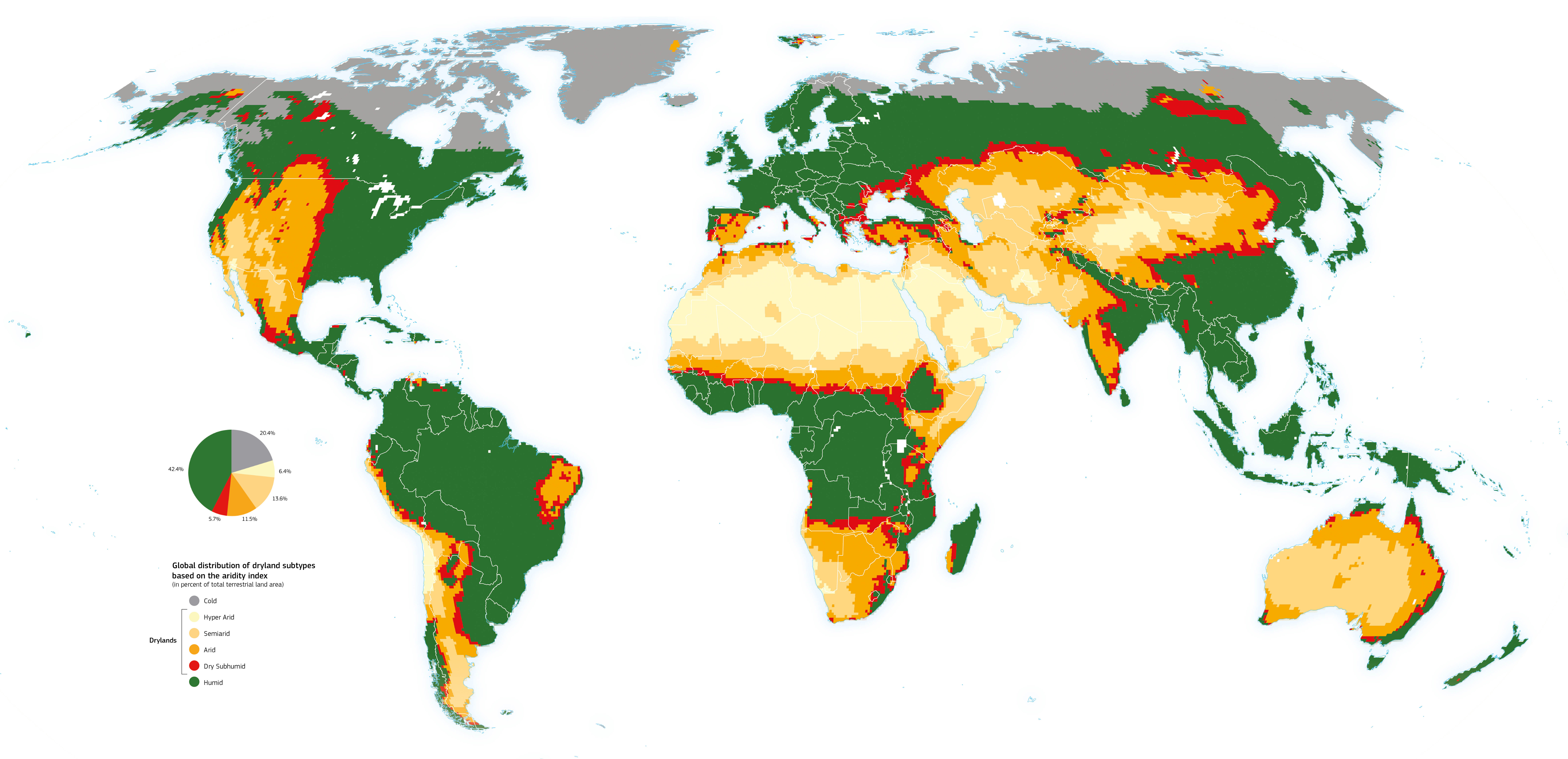Patterns of Aridity

The observed global distribution of the climate classes over the periods from 1951-1980 and 1981-2010. These AI maps are based on data computed using the 30-year average of P/PET: where i denotes the ith year.
where i denotes the ith year.
Aridity index (AI) is shown on a 0.5° global grid, processed by the JRC, using precipitation data from the Full Data Reanalysis (v6.0).
Source: Global Precipitation Climatology Centre and potential evapotranspiration data from the Climate Research Unit of the University of East Anglia (CRUTSv3.20), WAD3-JRC, modified from Spinoni J. 2015 [AP]
Aridity is a climate phenomenon characterised by a shortage of water
Most people associate the term aridity with drylands, which evokes various types of images, including sparse vegetation (e.g. succulents and other xerophytic plants), sand dunes, small amounts of water, little or no surface water, scant rainfall and high temperatures. This is only partly true as aridity is, in fact, a climate phenomenon principally characterised by a shortage of water and therefore, aridity also occurs in cold climates where precipitation falls mainly as snow, e.g. in the Arctic and Antarctica (the “polar deserts”), because they receive little net precipitation each year.
Water is, of course, the key to understanding aridity but at the same time has a physical meaning on the ground as determined by climate, vegetation and soil processes. Hence, aridity is commonly quantified by comparing the long-term average of water supply or precipitation (P) to the long-term average of climatic water demand (known as potential evapotranspiration). Potential evapotranspiration (PET) is a measure of the “drying power” of the atmosphere to remove water from land surfaces by evaporation (e.g. from the soil and plant canopy) and via plant transpiration. Consequently, if PET is greater than P, then the climate is considered to be arid. Of course, anomaly water deficits may also occur over shorter time periods, e.g. seasonally or monthly, which are called droughts depending on their intensity and duration.
The term aridity is meteorologically related to water availability, with many different techniques proposed to precisely define it. The Aridity Index (AI) is a simple but convenient numerical indicator of aridity based on long-term climatic water deficits and is calculated as the ratio P/PET. The AI is a widely used measure of dryness of the climate at a given location. Using the AI, six subtypes of arid lands or drylands are classified: cold, hyper-arid, arid, semi-arid, dry subhumid and humid.

1951-1980 period reprocessed by the JRC.
Source: Global Precipitation Climatology Centre and potential evapotranspiration data from the Climate Research Unit of the University of East Anglia (CRUTSv3.20), WAD3-JRC, modified from Spinoni J. 2015 [AP]

Climate classification and dryland subtypes based on the Aridity Index.
Source: Middleton and Thomas, WAD2, 1997.
